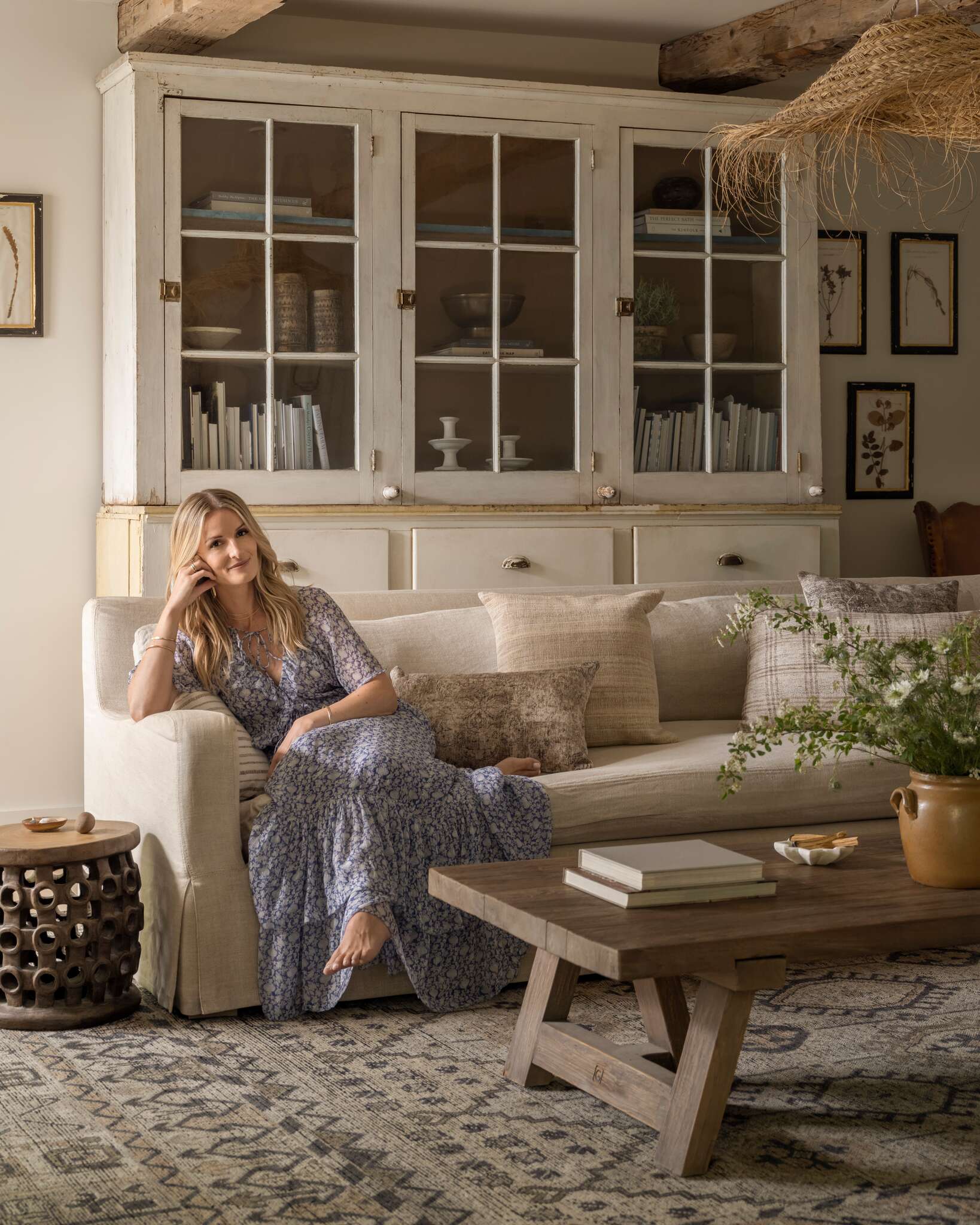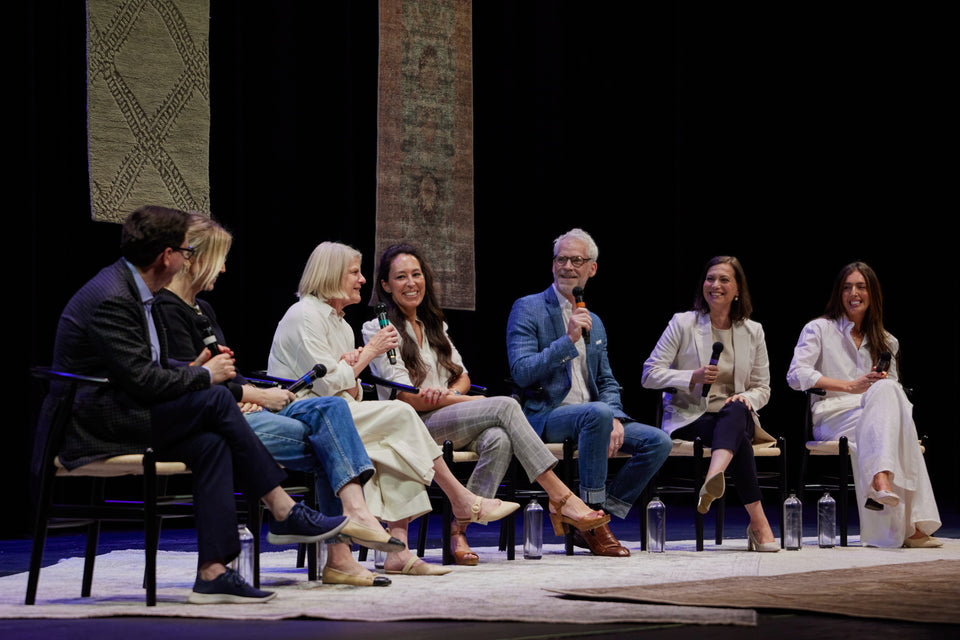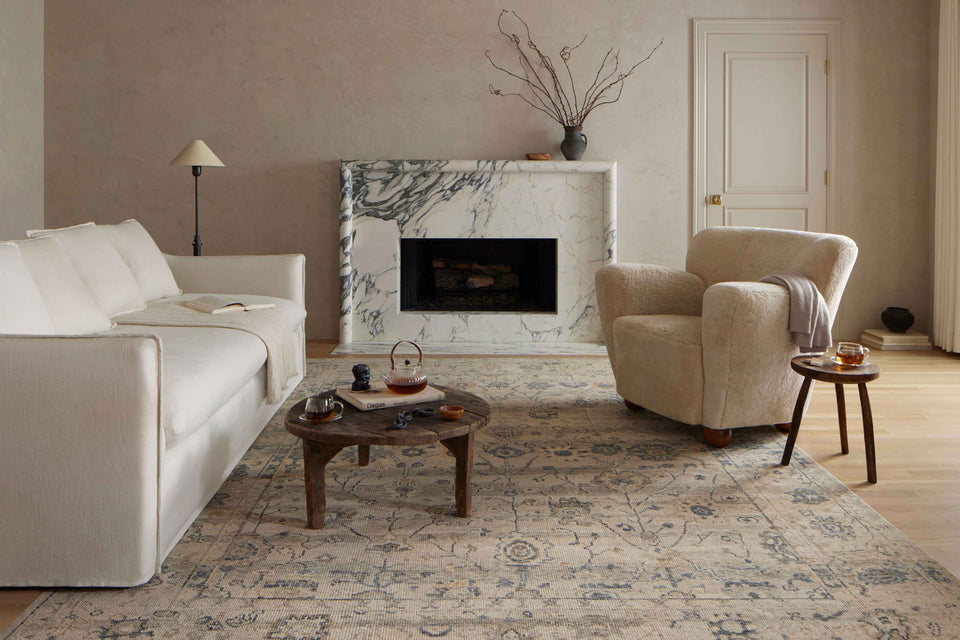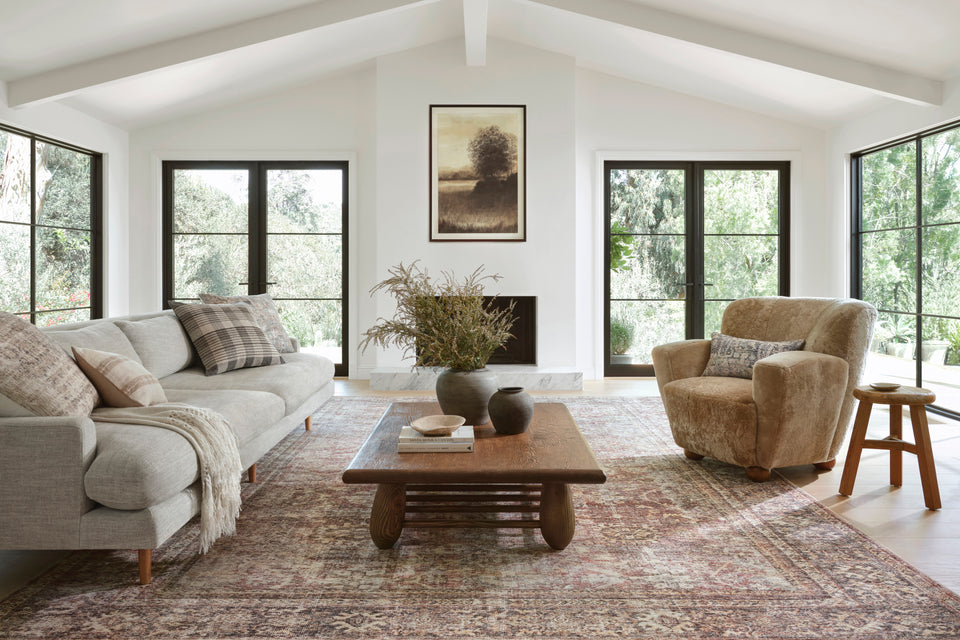Somewhere in the villages of Varanasi, an area in North India near the Ganges River, two weavers are focusing on their next move. Following a hand-drawn design—knot by knot, thread by thread—Raj, 32, and Jay, 40, intertwine fibers to create a 12-by-15 rug. Their methods are not modern, and their factory is unassuming. Instead of machines here, there are looms. Instead of engineers, weavers. Natural light floods the space. Chickens roam the gravel roads outside.
On this particular day, Raj and Jay are weaving a detail along the rug’s border, part of a design we call Pierce. It’s intricate work, so there’s little margin for error. They move slowly, gliding their fingers across the loom with careful intention. Raj, who learned the craft from his father, will use this experience to teach his daughter one day too.
After four hours, the two men have woven a grand total of five square inches. In the world of rugs, this is fast progress. Months before, this rug was a raw tangle of fibers, still spotted and full of grass from the pasture. Upon delivery at the factory, the rug fibers were then carded, spun, and dyed by hand. After months of weaving, the result will be carefully washed on both sides and then stitched onto metal frames to stretch the fiber, and then laid outside to dry under the Indian sun. Finally, the entire surface will be hand-finished and sheared by a skilled specialist to ensure no imperfections. Every step demands skill and passion. For artisans like Raj and Jay, it’s an art form.

For the past 25 years, Amir Loloi, our Owner, has traveled the Indian countryside searching for the best weavers and craftspeople. In 2004, he formed Loloi Rugs to bring those artisans’ work to the United States.
At 58, Amir still speaks with youthful excitement when he describes his travels to India. Sharing his favorite part of the creative process, he smiles and gestures with his hands. “Before designing a rug, you have to gain an understanding of the construction and the fiber,” says Amir. “What are the possibilities? What are the limitations? How will it take color?”
At each factory he sits with the craftsmen, sipping tea and trading ideas. “We lean quite a bit on the artisans to inform us. These conversations are the starting point for anything we create,” says Amir.
For Amir, that feeling of arriving as a traveler and leaving as a partner of their community makes the trip halfway across the world worth it.


Six months later, Raj and Jay are noticeably upbeat. Raj has just put the final touches on Pierce, shearing imperfections from the pile with nothing but a pair of scissors. Jay then unrolls the rug in the courtyard to dry after an antique wash. The artisan duo will soon be home to celebrate Diwali, a five-day festival that represents the start of the Hindu New Year, with family and friends. When they return, Pierce will finally be complete.
Another month passes and Pierce has arrived at the High Point Market in North Carolina, where Amir and his team of designers are merchandising our showroom. They hang Pierce eye-level at the very foremost display. Visitors arrive. One compliments the antique look. Another says she loves the detail in the border. It’s these nuances that both stand out and capture the journey, from a tiny village in North India to the showroom floor of North Carolina.

































